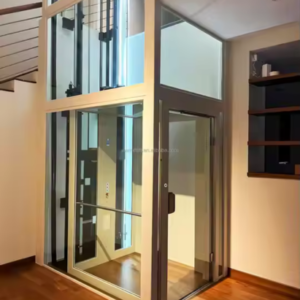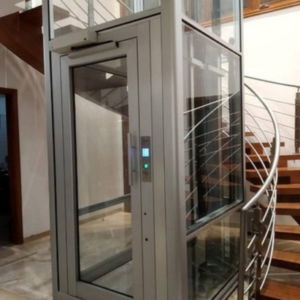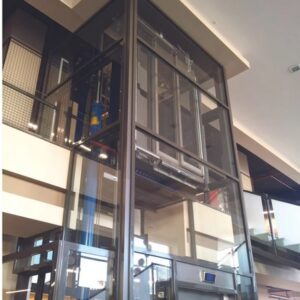Traction Elevator Lift
A traction elevator lift operates using steel ropes or belts that move over a traction sheave powered by an electric motor. It provides smooth and efficient vertical transportation, making it ideal for residential and commercial buildings. With a counterweight system, it reduces energy consumption and ensures a comfortable and reliable ride.
Product Description
A traction elevator lift stands out as one of the most commonly used vertical transportation systems in residential, commercial, and high-rise buildings. It operates with steel ropes or belts that move over a traction sheave, which an electric motor powers. Unlike hydraulic elevators, traction elevators rely on counterweights rather than fluid pressure, making them more efficient and better suited for taller buildings.
Working Mechanism of Traction Elevators
Traction elevators use a counterweight system to balance the elevator car’s weight. The steel ropes or belts attach to the cabin on one end and the counterweight on the other. As the motor rotates the traction sheave, the ropes move, lifting or lowering the elevator. Since the counterweight offsets much of the cabin’s weight, the system consumes less energy, improving overall efficiency.
Primarily, traction elevators fall into two categories: geared and gearless. Geared traction elevators feature a motor with a gearbox that controls speed and movement, making them ideal for mid-rise buildings. On the other hand, gearless traction elevators use a direct-drive motor connected to the sheave, ensuring smoother operation and higher speeds, which makes them the preferred choice for high-rise buildings.
Advantages of Traction Elevators
Traction elevators provide several advantages over other types of lifts. Because of the counterweight system, they consume less power, making them highly energy-efficient. Their smooth and quiet ride enhances passenger comfort. These elevators also operate at higher speeds, making them perfect for tall buildings. Additionally, since they do not require a machine room within the shaft, they allow for better space utilization and a more compact installation.
Design and Installation
The design of traction elevators varies based on the building’s requirements. The cabin interiors come in a range of materials, including stainless steel, glass, or wood, allowing them to match any architectural style. Modern elevators also feature advanced control panels and safety mechanisms that enhance performance and reliability.
Installing a traction elevator requires placing the traction system within a dedicated shaft. The motor and sheave sit at the top of the shaft, enabling smooth and efficient movement. Because traction elevators do not require a deep pit, unlike hydraulic models, they fit more easily into buildings with limited space.
Safety Features
Traction elevators incorporate multiple safety features to protect passengers. In case of power failure or mechanical issues, emergency brakes activate automatically. Speed governors regulate movement, preventing sudden acceleration. Additionally, sensors and automatic doors enhance safety by minimizing accident risks.
To maintain optimal performance, regular inspections remain crucial. Routine checks on the ropes sheave, and counterweight system help prevent wear and tear, ensuring long-term durability and reliability.













Reviews
There are no reviews yet.